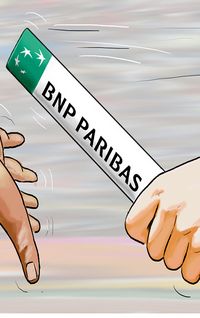The comeback kid
It is rare for a sub-investment-grade issuer with a default still fresh in people’s minds to bring a deal to the notoriously conservative Swiss market.
But Argentina managed just that in March. Although it was not all plain sailing, the country achieved a feat that some had thought impossible at any price.
The deal marked the sovereign’s return to the Swiss market after a near two-decade absence. It had previously issued in December 1998, three years before the country’s last debt default.
It followed a roadshow that had the “who’s who of the Swiss market” in attendance, according to a banker at one of the leads (a group made up of BNP Paribas, Credit Suisse and UBS). A large number of non-domestic accounts attended as well, an unusual occurrence in the normally insular Swiss market.
The Latin American sovereign raised SFr400m through a three-and-a-half-year trade, less than the SFr750m it had hinted at on the roadshow, according to an investor who attended, but still well above benchmark size. Leads denied there was an official target amount.
Bookbuilding began with a minimum size of SFr300m, with the target subsequently increased on the back of strong interest.
However, the bonds were priced at the wide end of a 3.125%–3.375% guidance range that did not move through the execution process as some institutional investors set limits.
With lowly B3/B– ratings, Argentina needed to pay up to convince Switzerland’s careful investors to take part, coming around 20bp wide of its euro curve and just shy of 150bp over its US dollar bonds, adjusted for the cross-currency swap.
However, that is comparable with the 50bp extra that the likes of Gazprom pays over its euro curve to achieve a good size in the franc, given the difference in ratings and domestic support. It also can be viewed in the context of the likes of Moscow real estate investor O1 Properties, which could not get a four-year deal away later in the year, even at 6%.
Argentina’s pricing made for a fine arbitrage opportunity for asset swappers and hedge funds to pick up spread in the credit.
Still, Argentina was keen to diversify its investor base and currency flows, especially as the finance ministry has big funding needs.
A tail end of SFr14.585m still technically defaulted paper remained a bit of a millstone around the issuer’s neck, as some investors were reluctant to forgive and forget. Despite that, books finished just over fully subscribed with well over 200 accounts taking part.
Of those that did buy, around half went to private banks and retail with the remainder mostly split between asset managers and banks. More than half went to Swiss accounts, with foreign asset swappers and hedge funds taking most of the rest.
To see the digital version of this review, please click here.
To purchase printed copies or a PDF of this review, please email gloria.balbastro@tr.com.


